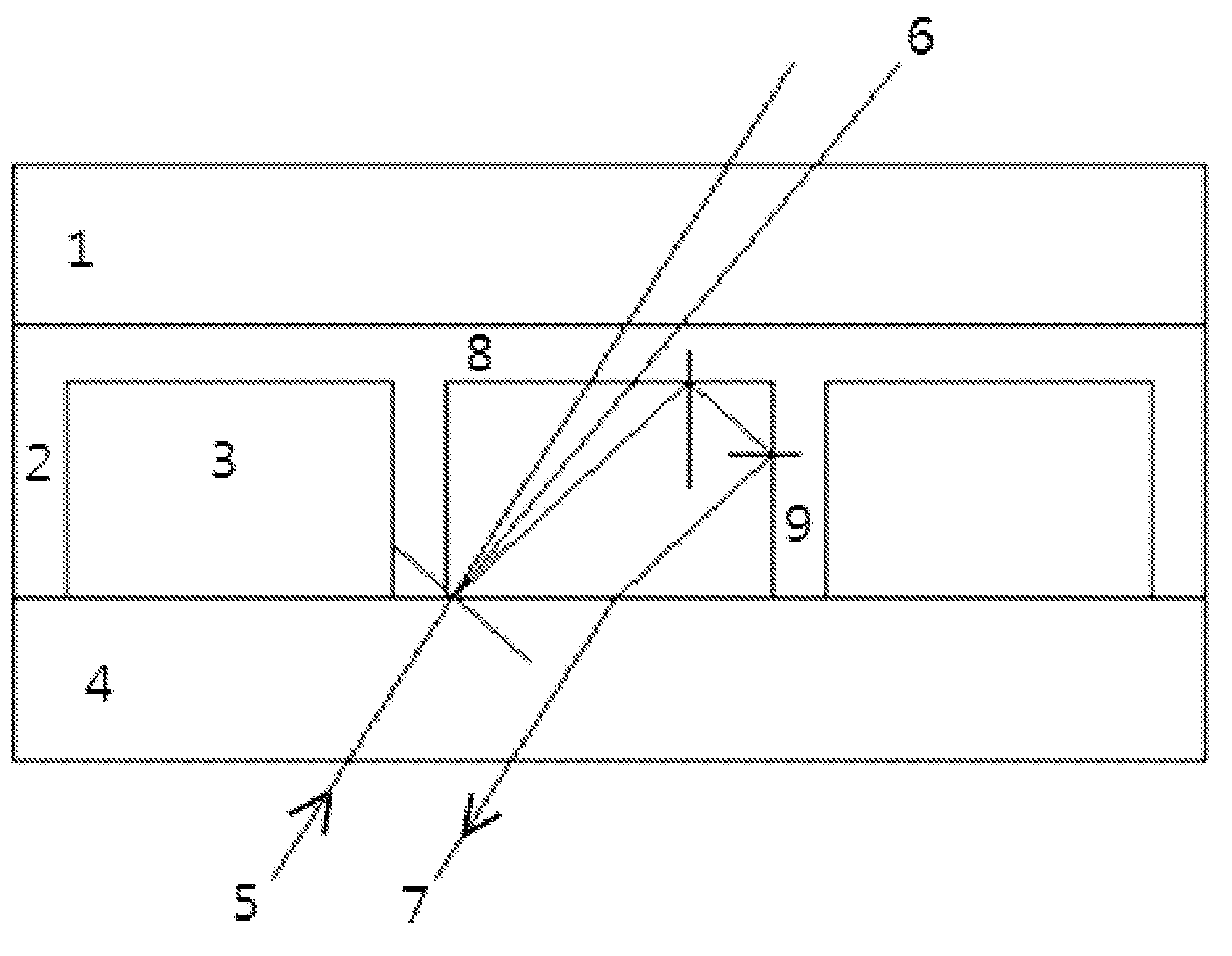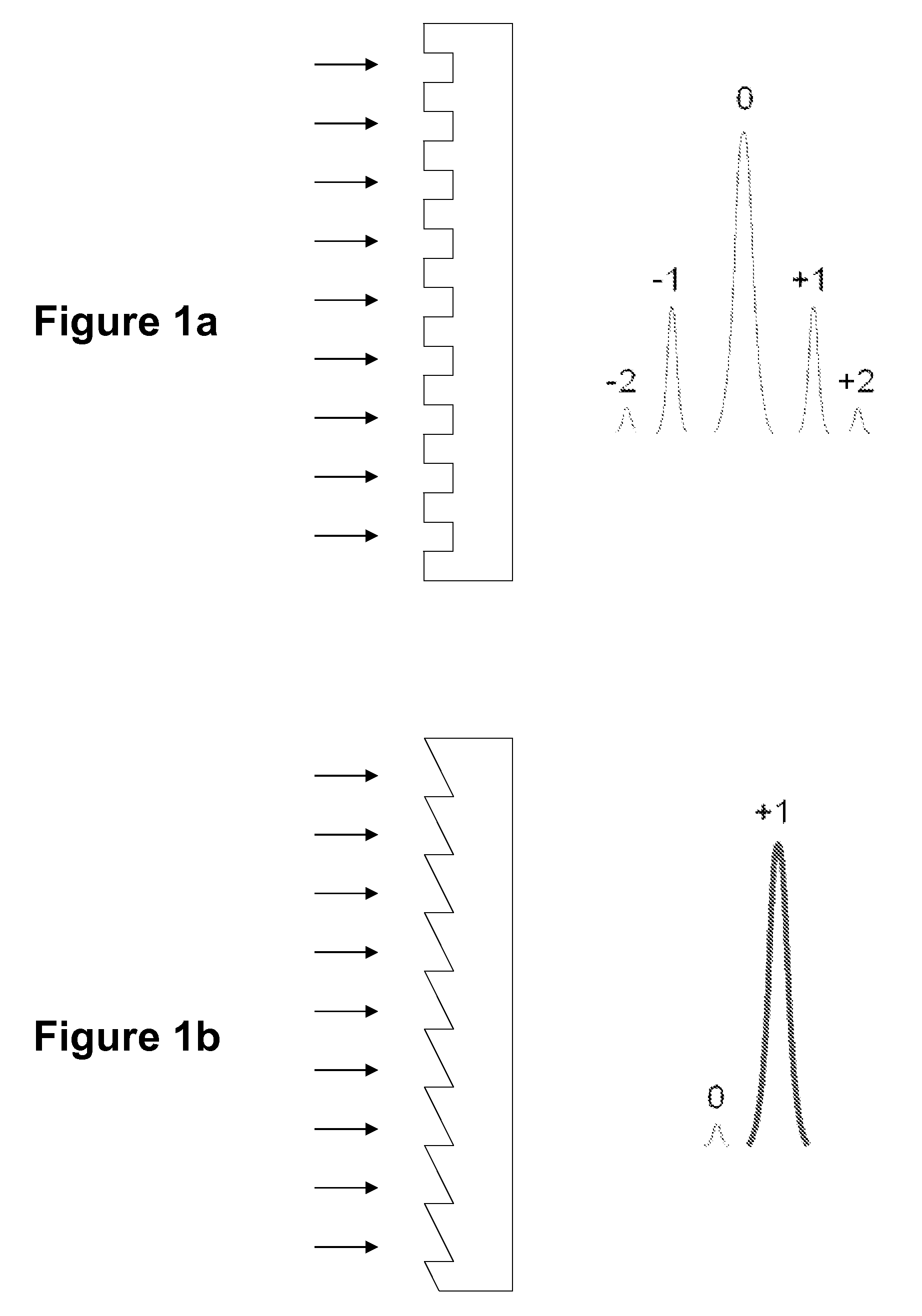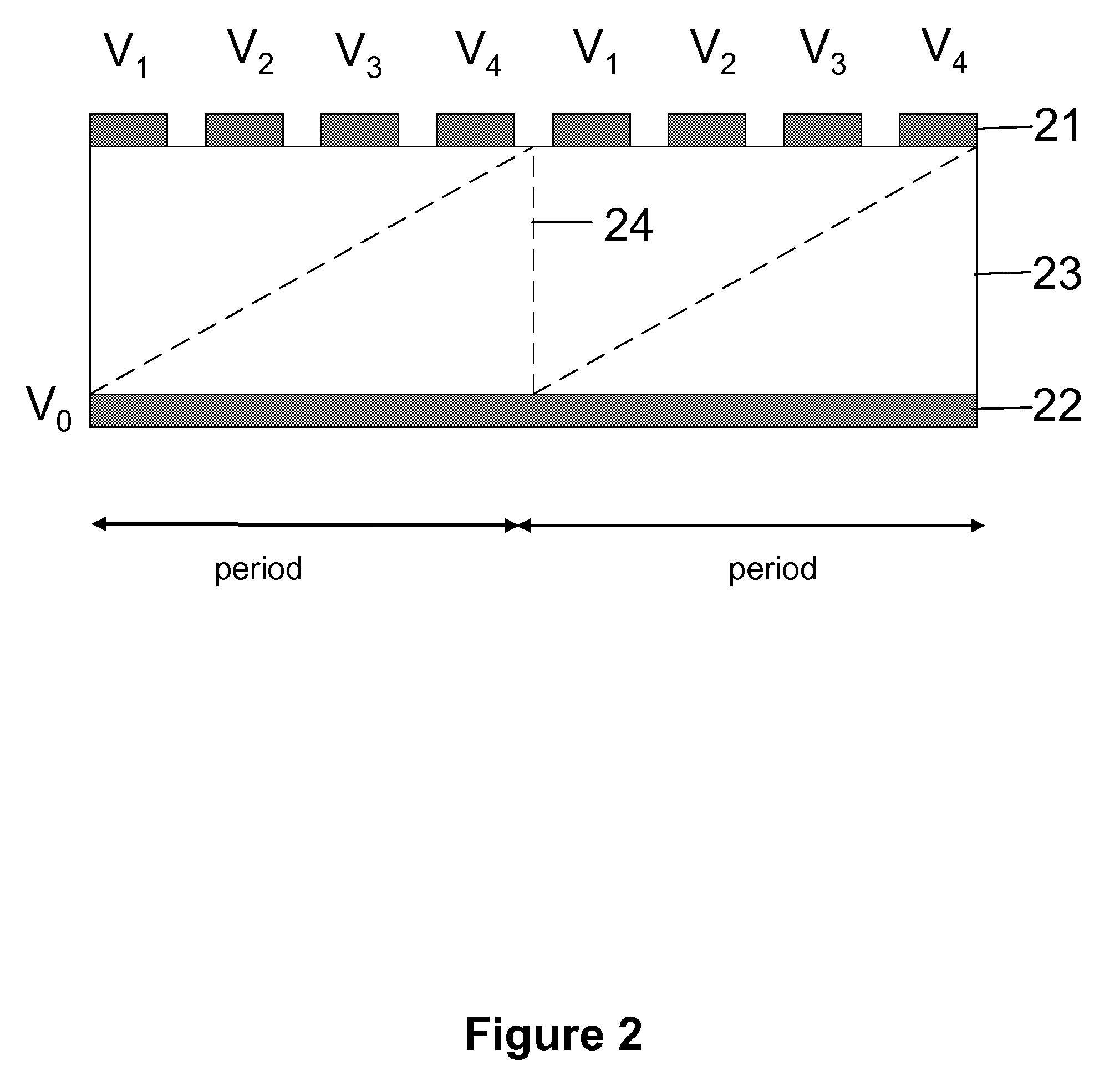Energy-Efficient Optoelectronic Smart Window
- Summary
- Abstract
- Description
- Claims
- Application Information
AI Technical Summary
Benefits of technology
Problems solved by technology
Method used
Image
Examples
example 1
Fabrication Methods
[0074]Listed below are several methods which are utilized for fabrication of a film with a wide range of thicknesses and narrow uniformities to tolerance limits which are useful with the windows and methods described herein. For example, useful methods for forming a TIR layer include, but are not limited to:
[0075]Spin coating: Spin coating is a method of obtaining a uniform film thickness by disposing the coating solution with a viscosity on the substrate spinning at a specific rate usually ranging from 1000 rpm to 5000 rpm. It has been used to obtain relatively thin films.
[0076]Roll coating: This method uses 2 or 3 rolls, which rotate at a fast rate. First, a material feeding system coats the slurry material onto the first rotating roller; next, the slurry on the first roll is transferred to the second rotating roll. During this procedure, the desired uniformity and film thickness may be achieved. Finally, material on the second rotating roll is coated onto a fle...
example 2
Total Internal Reflection Layer Material Selection
[0085]The primary condition for total internal reflection is the selection of at least two materials with different refractive indices. In addition, the TIR material should have the following properties:
[0086]All materials used in the TIR layer should have a high optical transmittance in the visible spectrum (0.3˜0.7 μm) and the infrared spectrum (0.7˜3.0 μm).
[0087]All materials should be easy to coat and should not damage the underlying layers during processing. If the solvent used in the top layer to prepare the coating solution is similar to the one in the bottom layer, severe damage can be expected in the bottom layer during coating and drying.
[0088]Sharply defined 3-dimensional cells can be patterned with well known patterning processes. The widely accepted patterning methods include photolithography and etching, laser ablation, pattern printing, and micro-molding.
[0089]The materials should have a reliable resistance against hea...
example 3
[0092]In an energy-efficient optoelectronic window system embodiment, several technical elements are utilized in novel ways. As already mentioned, one component of a window system is a transmissive blazed diffraction grating and a total internal reflection layer, which are attached, fabricated and configured in such a manner that their spectral characteristics can be selected in desirable ways to dynamically change their reflectivity and transmission for near-IR as well as visible light. The window structure, as illustrated in FIGS. 11a and 11b, comprises an outer glass pane, a programmable blazed diffraction grating layer, an inner glass pane, and a total internal reflection (TIR) pane. The programmable blazed diffraction grating layer is pixelated and its refractive index is pixel-wise modulatable by an array of electrodes, enabling a phase grating that can be programmed to function as a blazed grating only for the near-IR spectral component of the solar radiation. The programmabl...
PUM
| Property | Measurement | Unit |
|---|---|---|
| Length | aaaaa | aaaaa |
| Length | aaaaa | aaaaa |
| Thickness | aaaaa | aaaaa |
Abstract
Description
Claims
Application Information
 Login to View More
Login to View More - R&D
- Intellectual Property
- Life Sciences
- Materials
- Tech Scout
- Unparalleled Data Quality
- Higher Quality Content
- 60% Fewer Hallucinations
Browse by: Latest US Patents, China's latest patents, Technical Efficacy Thesaurus, Application Domain, Technology Topic, Popular Technical Reports.
© 2025 PatSnap. All rights reserved.Legal|Privacy policy|Modern Slavery Act Transparency Statement|Sitemap|About US| Contact US: help@patsnap.com



